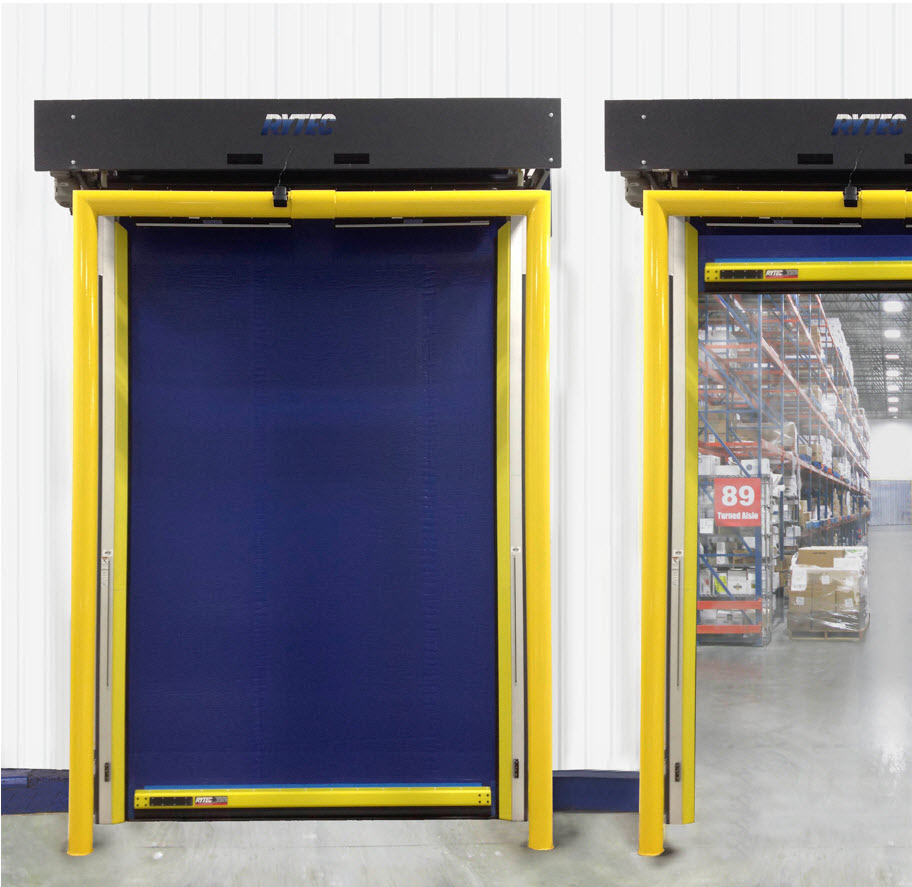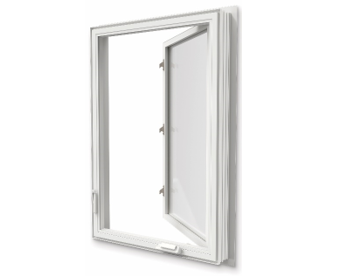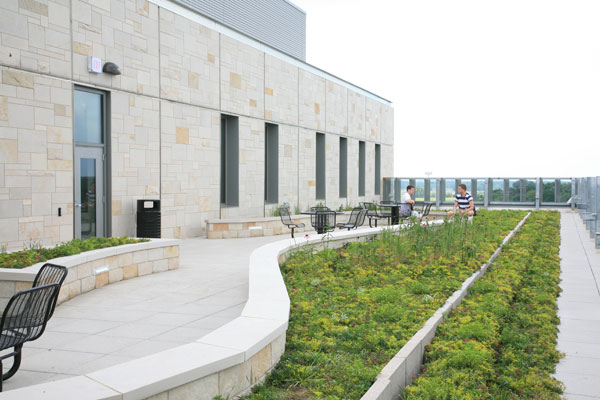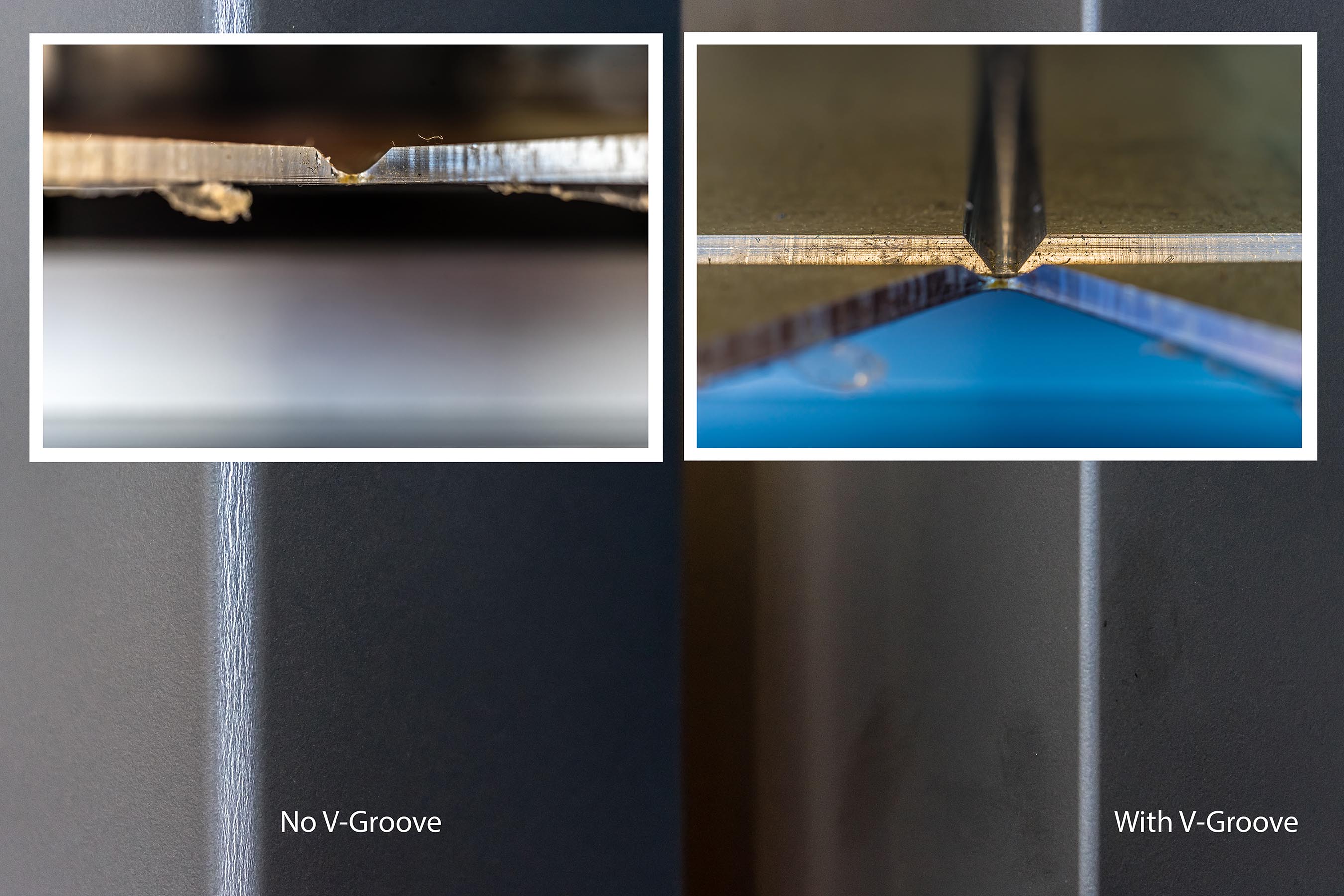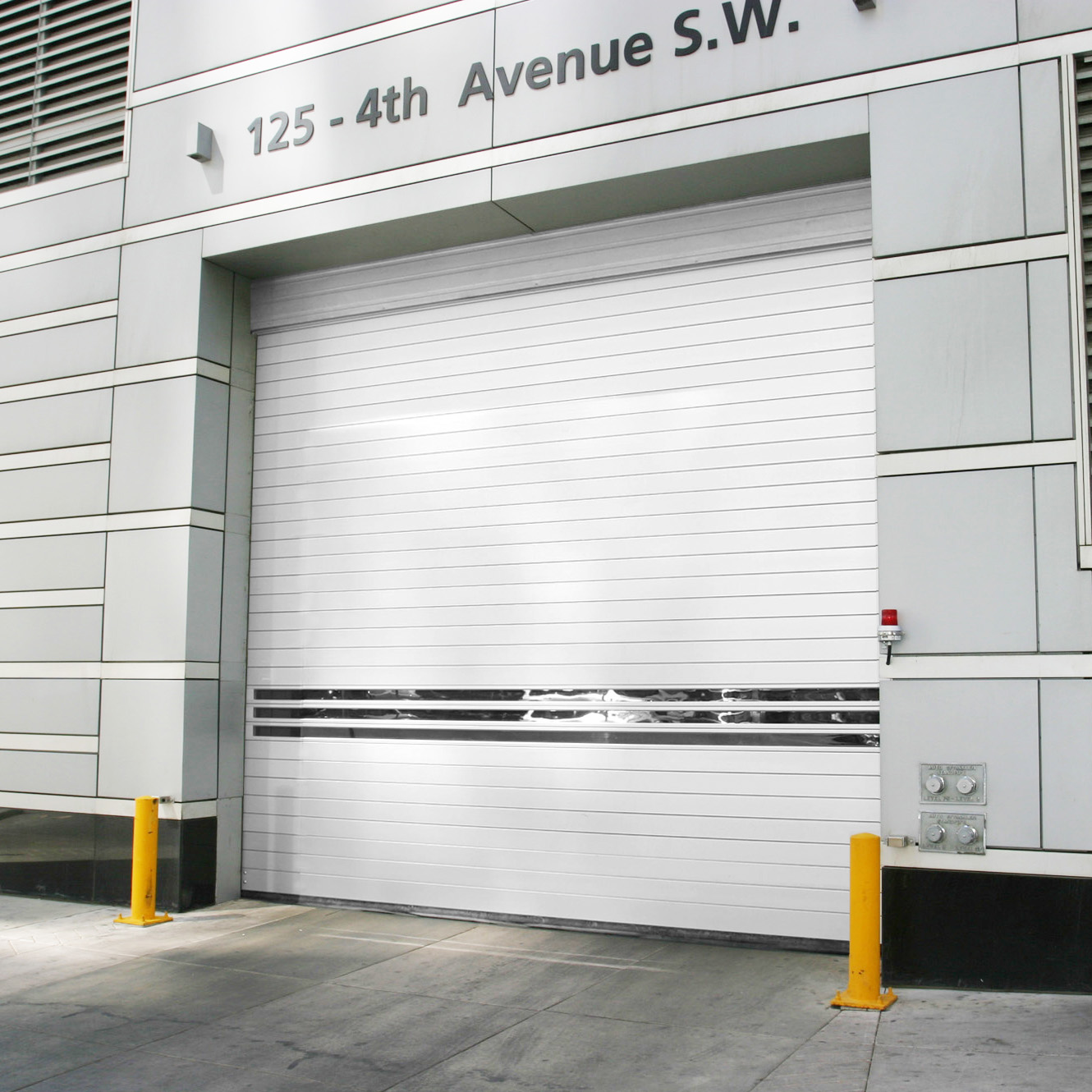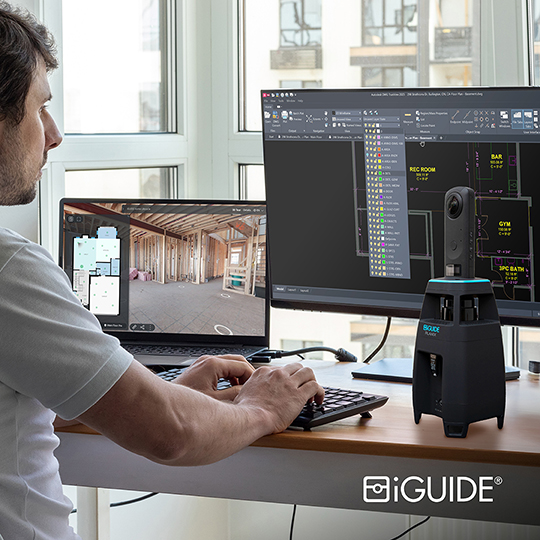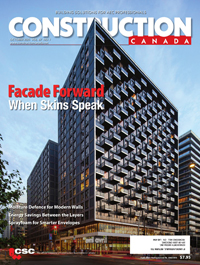Health-care architecture: Woven metal fabric in modern medical spaces
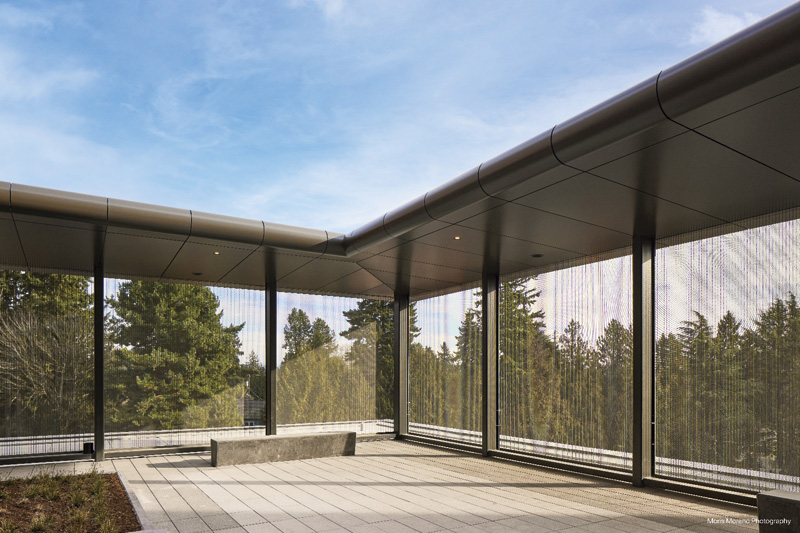
Many architectural materials have a place in health-care design but must meet stringent performance standards before they are deemed appropriate for these demanding environments. Health-care environments see round-the-clock, year-round use and experience some of the highest risks for damage. The need for clean, sterile environments that reduce the risk of hospital-acquired infections (HAIs) mandates rigorous cleaning regimens, using strong chemicals often.
As the demand for innovative hospitals, behavioural health centres, and ambulatory clinics continues to rise, woven metal fabric has become an attractive, resilient, and dynamic option.
Why metal fabric?
Rugged durability, biophilic properties, and safety benefits are the main reasons metal fabric is specified for behavioural health environments. The distinctive function of these settings—providing physically and mentally healthy spaces where people can process and heal while maintaining a high level of safety and security—makes metal fabric an ideal specification.
Hospitals increasingly recognize the importance of access to green spaces and natural sunlight in patient recovery. However, providing outdoor access requires enclosures that are not only secure but also thoughtfully designed to protect patients from themselves and from potential harm caused by the enclosure itself. Woven metal fabric offers a unique solution: it maintains airflow and visibility while delivering the strength and safety needed for high-risk settings.
Beyond therapeutic outdoor areas, parking garages are another overlooked but impactful application. Metal fabric can enhance these structures by deterring self-harm and unauthorized access while maintaining an open, ventilated environment.
Beauty and biophilia
Therapeutic environments that include access to and views of nature, daylight, and fresh air can reduce anxiety, ease depression, support cognitive function, and aid in healing. This design theory, known as biophilia, describes a person’s innate tendency to connect with other living things and nature. Biophilic design incorporates elements of nature into a space in a connected, complementary, and integrated way. The goal is to increase people’s connection to nature and improve their health, fitness, and well-being. Biophilic design can use direct and indirect nature and space and place conditions. Woven metal fabric provides a flexible medium to bridge outdoor access with applications in interior design, mid-door creation, and rooftop activation.
Noise has long been documented as a hindrance to healing and a mental health disturbance.2 Metal mesh panels lined with acoustic fleece manage interior noise transfer when applied as ceiling panels, partitions, and interior wall cladding.
Durability
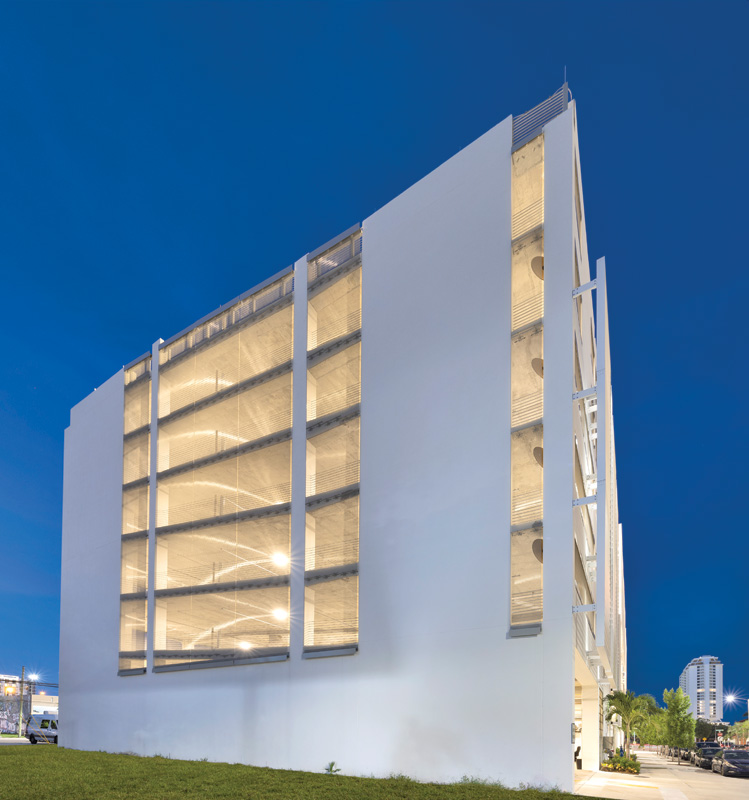
Designing exterior architectural features can be challenging, as natural forces such as wind, rain, and snow test even the most durable materials. Building products must be weather- and UV-resistant to combat the damaging effects of sunlight and corrosion-resistant when used in coastal environments and other harsh climates.
Metal fabrics are engineered to withstand prolonged tension, fire, heat, impact, and heavy loads. The highly durable metal surfaces can withstand even the harshest outdoor conditions without corrosion or deterioration.
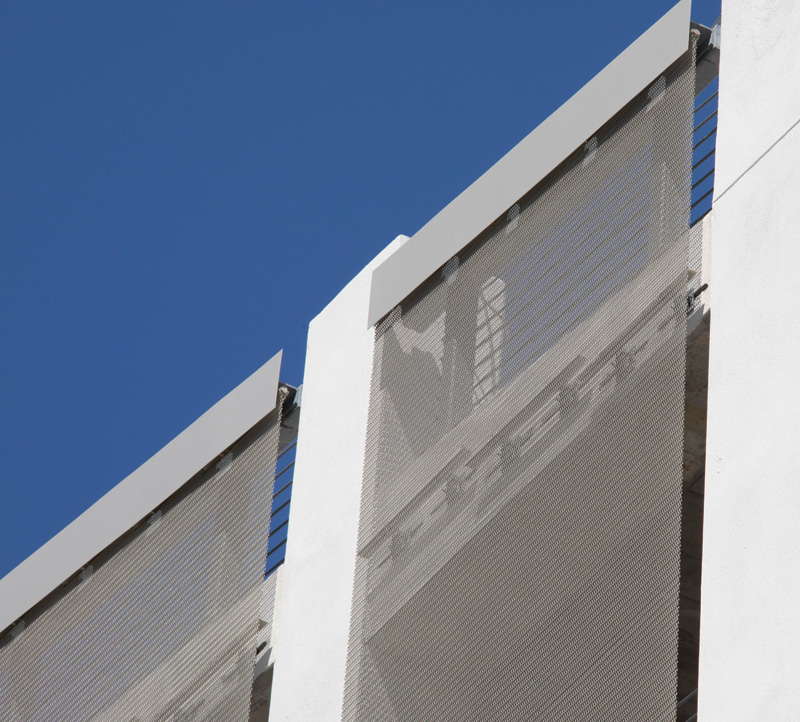
High-quality woven metal fabrics are primarily constructed of American Iron and Steel Institute (AISI) Type 316L stainless steel, which for more than half a century has provided architects with the means to express their design concepts permanently. This visual permanency is due to the material’s excellent resistance to corrosion, as the “L” stands for low carbon. This allows the surface to retain its original appearance indefinitely with little maintenance.
Safety and privacy

Metal mesh can be used to define interior spaces and provide privacy with a modern esthetic. It can be ideal for offering personal space to patients, establishing social distancing, or enforcing foot traffic protocols.
Metal mesh panels can also restrict access or safely enclose a space. The material can be extended from the point of safety into other areas to create a consistent and welcoming design. The high durability of stainless steel makes these weaves ideal for high-trafficked areas and behavioural health settings where anti-climb and anti-impact features are essential.
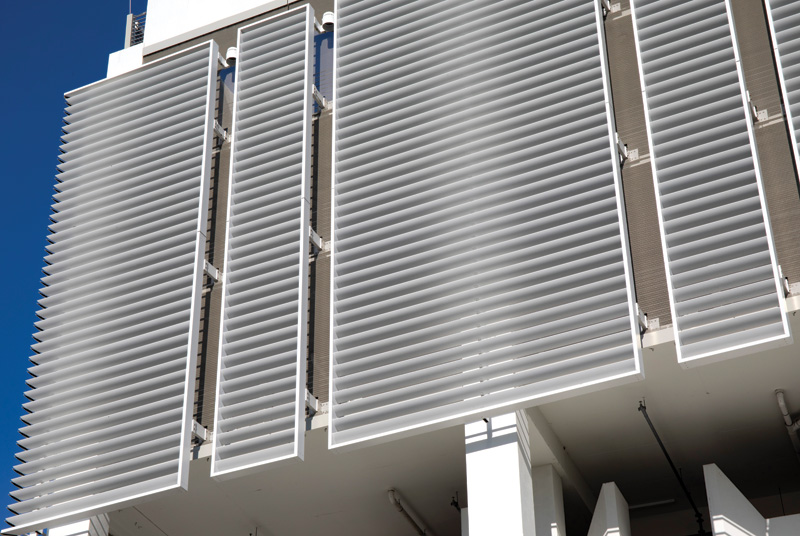
Weave patterns
Weave patterns can effectively provide sun shading over windows or glass facades without obstructing views. Within outdoor and mid-door spaces, metal fabric enables airflow while maintaining safety, such as railing infill or fall protection along rooftop perimeters. A wide array of metallic surfaces and colour coatings, custom etching, and printing options provide unmatched design flexibility to incorporate branding, wayfinding, and design features within woven metal components.
A common misconception is that woven metal fabric is difficult to clean. In reality, stainless steel is one of the most durable and low-maintenance materials available. It is routinely exposed to the elements on exterior facades, where rain naturally washes away most surface debris. When additional cleaning is needed, something as simple as dish soap is often all it takes.
Safe materials for safe spaces
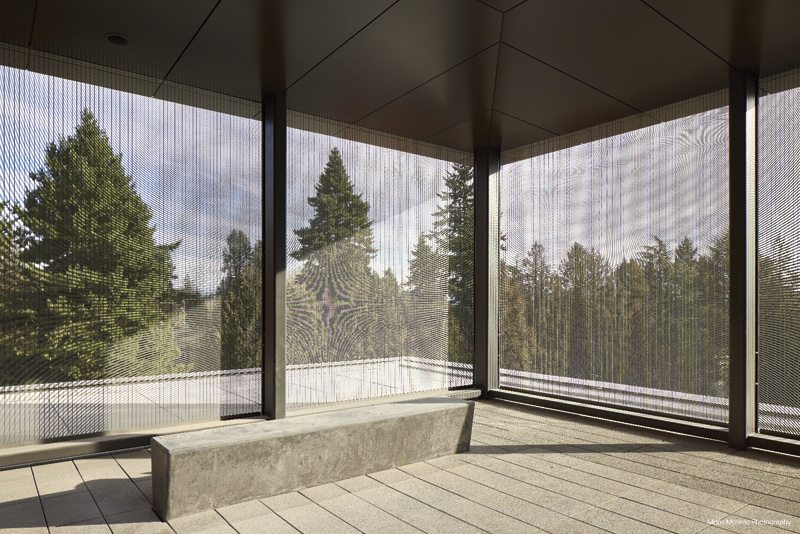
Today, psychiatric healthcare facilities, whether new or existing, must meet comprehensive accreditation standards to minimize risks to patient safety. Principles that support patient safety strategies avoid systems, assemblies, and materials that can be weaponized, yield sharp edges, or provide ligature points in all locations accessible to patients.
- The composition of highly durable stainless steel addresses the needs of behavioural health settings where design against impact loading is required. The strength of the material can be designed to resist the impact of furniture or other objects being thrown at it or a fully grown person running into it at full speed.
- The weaves specified for behavioural health feature small openings, too small for fingers to gain purchase. This gives the material anti-climb and anti-ligature properties. Anti-ligature is a safety measure that prevents people from using ligatures—objects that are used to tightly bind or tie things together—to harm themselves.
- Despite the strength of metal fabric when used as an enclosure, the material is still visually transparent so patients can enjoy views of the outside. Patients can also enjoy sunlight and fresh air in a space enclosed by metal fabric.
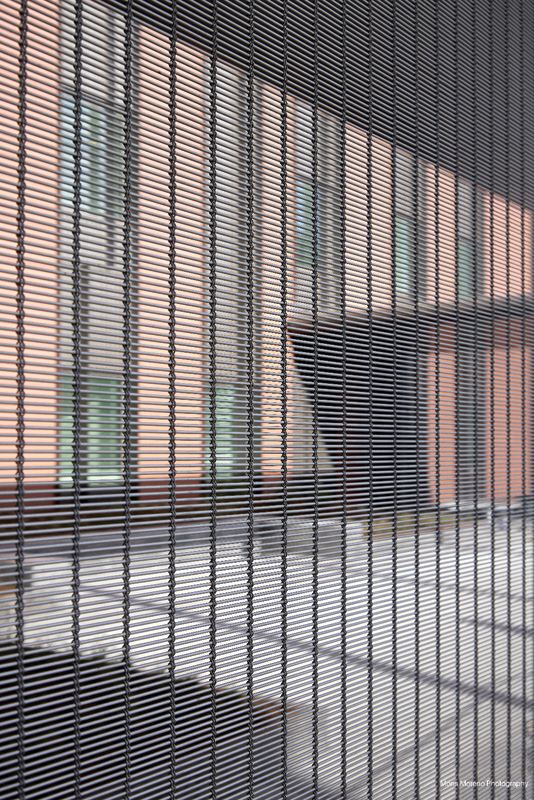
Healthy materials for healthy spaces
Specifying for environments where the main function is healing requires thoughtful consideration of the healthiness of the materials selected to outfit the space. Metal fabric offers a range of sustainability benefits due to its inherent characteristics and the benefits it brings to a building once in use. Additionally, many metal mesh applications can contribute to LEED and WELL Building credits.
Material makeup
Many metal fabrics are engineered using stainless steel, which is a sustainable product due to its composition, durability, and recyclability.
- Composition—More than 60 per cent of the recycled material in stainless steel used in metal fabrics comes from post-industrial and post-consumer sources.
- Durability—Extends the life cycle of existing building stock, conserves resources, retains cultural resources, and reduces waste and the environmental impacts of new buildings relating to materials manufacturing and transport. Specifying durable stainless steel metal fabric reduces the need for replacement or repair. Additionally, stainless steel does not require a surface coating that can deteriorate and pollute the environment. The low-maintenance material does not require hazardous cleaning products to maintain.
- Recyclability—Stainless steel retains its qualities throughout the recycling process. Recycling stainless steel involves no health-hazardous materials. During manufacturing, all the scrap or unused material is recycled and fully recyclable at the end of its life cycle.
As mentioned, the primary material used in woven metal fabric is also 316L stainless steel—commonly known as marine grade. It is the same grade chosen by the United States Department of Agriculture (USDA) for hygienic environments due to its high resistance to germs and ease of cleaning. Much like silverware and surgical tools, 316L stainless steel is naturally antimicrobial and resistant to disease transmission.
In application
Metal fabric panels reduce solar heat gain by mitigating intense sunlight when used as a building facade or exterior veil. The shade provided translates to energy savings through reduced dependence on HVAC systems. At the same time, metal fabric allows natural light transmission, providing effective internal illumination and reducing related energy costs.
Using a metal fabric facade can connect indoor occupants with outdoor spaces. Basking in natural light syncs circadian rhythms, resulting in better quality sleep—the number one predictor of health outcomes. These aspects are included in the WELL Building Standard’s Light and Mind sections. A space using a versatile material, such as metal fabric, conducive to seamless indoor/outdoor blending increases occupant connectivity to the environment. They also provide biophilic benefits fundamental to human performance, such as daylight, ventilation, and naturally filtered and humidified air. Biophilic elements have been found to support cognitive function, physical health, and psychological well-being.
Notes
1 Refer to the AIA’s “Consensus Construction Forecast” (January 2024).
2 See the article by Harvard Medicine, “The Effects of Noise on Health” (2022).
Author
Dale Payne, PE, serves as chief engineer for GKD-USA and is a leader in metal fabrics for architectural applications based in Cambridge, Maryland. He supports the GKD sales, estimating, and production departments in developing new applications and completing and supporting all architectural projects. Payne, who holds a professional engineering license for the State of Maryland, earned his bachelor’s degree in mechanical engineering from the University of Maryland, College Park, and his associate’s degree in engineering technology from Chesapeake College.


